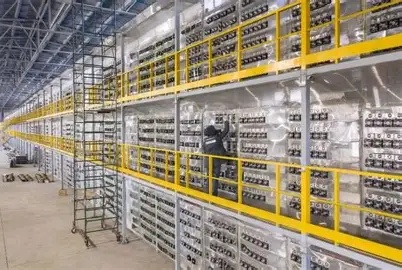Why Regular Mining Machine Maintenance Boosts Profitability for Australian Miners
In the exhilarating whirlwind of cryptocurrency mining, where every tick of the clock translates into potential profit or loss, the role of regular mining machine maintenance cannot be overstated. For Australian miners immersed in the volatile ecosystem of digital currencies such as Bitcoin (BTC), Ethereum (ETH), and Dogecoin (DOG), the efficiency and longevity of mining rigs significantly dictate success margins. Mining rigs, those intricate assemblies of high-powered hardware, tirelessly execute complex algorithms to validate transactions on blockchain networks. Yet, without conscientious upkeep, these marvels of technology falter, costing miners dearly in downtime, reduced hash rates, and surging electricity bills.
Maintenance, in this context, goes far beyond simple dusting or occasional firmware updates. It’s a holistic approach encompassing hardware diagnostics, thermal management, software optimization, and power supply integrity checks. Australian mining farms, often spread across vast tracts of land with dozens, if not hundreds, of specialized miners humming relentlessly, must prioritize systematic maintenance schedules. A malfunctioning miner not only diminishes individual output but can ripple across an entire mining operation, threatening the granular profit margins that define the industry’s competitiveness. Moreover, environmental factors particular to Australia—ranging from coastal humidity to outback dust storms—exacerbate hardware wear, making targeted maintenance protocols indispensable.

Consider the intricate dance between a mining rig’s temperature and its operational efficiency. Heat, the relentless nemesis of electronic components, accelerates wear and throttles performance. Without proactive cooling system maintenance—such as fan cleaning, replacement of thermal paste, and airflow optimization—miners face frequent hardware failures and diminished hash rates. For crypto miners targeting Bitcoin, where equipment like the Antminer series demands precision thermal management, neglect results in rapid depreciation of returns. Conversely, for miners engaging with Ethereum or altcoins like Dogecoin, whose algorithms might be GPU-centric, keeping graphics cards cool preserves both hashing power and hardware lifespan, reinforcing a stable revenue stream.
Hosting mining machines in specialized facilities has emerged as a savvy strategy for Australian miners aiming to maximize uptime and profit. These hosting services provide climate-controlled environments, dedicated power sources, and professional technical support, effectively insulating miners from the pitfalls of individual machine neglect. Yet, even within these optimized ecosystems, maintenance remains the backbone of sustained profitability. Hosted miners benefit from routine inspections, component replacements, and system updates conducted by seasoned technicians, ensuring that rigs operate near peak efficiency and adhere to evolving network protocols—pivotal when mining for volatile assets like Bitcoin or keeping pace with changes in Ethereum’s proof-of-stake transitions.
Furthermore, software maintenance intricately weaves into the sustainability narrative. Mining software, often customized for various cryptocurrencies, requires regular updates to patch vulnerabilities, enhance efficiency, and adapt to algorithmic shifts. An outdated mining client may lead to suboptimal block validation speeds or even rejection by mining pools within exchanges. Australian miners must grasp that the synchronization between hardware robustness and software agility defines their competitive edge. This synchronization is particularly critical when mining rigs participate in complex, multi-currency strategies or switch mining targets dynamically based on market fluctuations across cryptocurrency exchanges.
Strategically, seasoned miners in Australia leverage meticulous maintenance to extend the lifecycle of costly equipment. Mining rigs represent substantial capital expenditure, where premature hardware replacement can erode profit margins rapidly. Regular maintenance reduces the incidence of catastrophic failures and unanticipated downtime, protecting investments during bearish market phases. Additionally, eco-conscious miners who optimize machine efficiency contribute to energy savings—a significant consideration in regions where electricity costs substantially impact operational budgets. By executing scheduled maintenance, miners not only preserve hashing power but also align with sustainable practices increasingly favored by regulators and consumers alike.

Mining farms in Australia exemplify the synthesis of scale and precision maintenance. These vast operations, deploying hundreds or thousands of miners, embody the industrialization of digital currencies. Here, maintenance teams utilize advanced monitoring software, predictive analytics, and automated alert systems to detect anomalies before they escalate. Real-time monitoring enables swift intervention—be it hardware swaps, firmware patches, or recalibrations—minimizing downtime and maximizing returns. The fluidity and robustness of this approach elevate mining farms above amateur operations, making them critical nodes in the global cryptocurrency network and formidable participants on major trading exchanges.
In conclusion, for Australian miners entrenched in the fast-paced, ever-evolving cryptocurrency landscape, consistent mining machine maintenance emerges as the linchpin of profitability and resilience. Beyond the obvious wear and tear, effective maintenance encompasses a mosaic of technical, operational, and strategic facets that collectively safeguard mining rigs from obsolescence and inefficiency. Whether mining Bitcoin’s sha256 algorithms, Ethereum’s Ethash workloads, or capitalizing on Dogecoin’s emergent trends, Australian miners who invest in proactive upkeep position themselves for enduring success amidst market turbulence. Ultimately, it’s this blend of technology stewardship and business acumen that transforms mining machines in remote warehouses or advanced hosting centers into prolific profit engines.
Dust, heat, and relentless operation take a toll. Regular maintenance prevents costly breakdowns, extends lifespan, and unexpectedly maximizes ore extraction, directly impacting Australian miners’ bottom line. A smarter, not harder, approach to profitability.